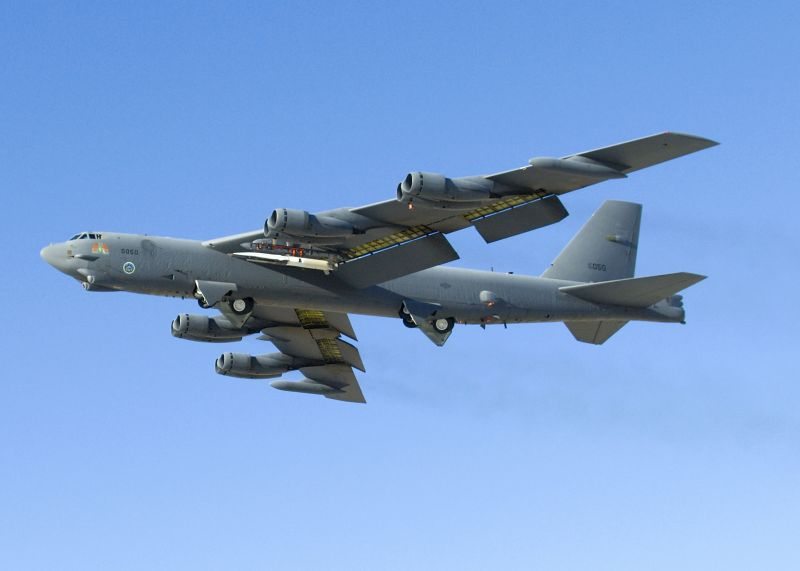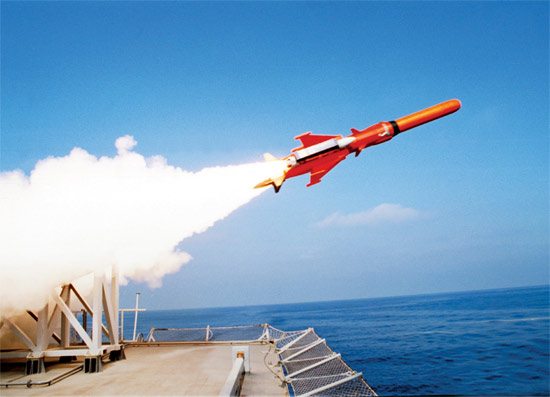Tinker AFB Airmen will update ground maintenance and mission planning software in support of a new Air Force contract that will increase the B-52 Stratofortress’s “smart-weapons” capacity by 50 percent.
The $24.6 million agreement stipulates that Boeing will develop a modification to existing weapon launchers so the aircraft can carry smart weapons in the bomb bay, which will enable aircrews to use the B-52’s entire weapons capacity.
“With this modification, we’re converting the bomb bay from dropping just gravity-type bombs to releasing precision-guided weapons,” said Jennifer Hogan of Boeing Communications.
“When you combine that ability with the B-52’s unlimited range with air refueling, you have an efficient and versatile weapon system that is valuable to warfighters on the ground,” said Scot Oathout, the Boeing’s B-52 program director. “This weapons capacity expansion joins the Combat Network Communications Technology (CONECT) program, a comprehensive communication upgrade that’s being installed on the aircraft, to give the warfighter even more flexibility.”
Boeing will produce three prototype launchers for test and evaluation. Initial capability is expected in March 2016, and potential follow-on efforts could add more weapons and allow a mixed load of different types of weapons.
Upon completion of the first phase of the upgrade, the B-52 will be able to carry two dozen 500-pound Joint Direct Attack Munitions or twenty 2,000-pound JDAMs. Later phases will add the Joint Air-to-Surface Standoff Missile, or JASSM, and its extended-range variant, as well as the Miniature Air Launched Decoy, or MALD, and its jammer variant.
The bomb bay renovation will enable the B-52 to carry all of its weapons internally, thereby increasing fuel efficiency in flight. The modernization work will use parts from existing Air Force rotary launchers repurposed for conventional missions, as well as hardware and software already developed for the wing pylons.
Engineers from the 76th Software Maintenance Group, 557th Software Maintenance Squadron, B-52 Software Avionics Flight here, are modifying the 1760 Integrated Weapon Bay Upgrade, or IWBU Ground Maintenance Computer Program to test out the additional Integrated Weapon Interface Unit being added in the bay location on the B-52 in order to launch additional weapons from the weapons bay location.
The primary function of the Ground Maintenance Computer Program is to test the B-52 Offensive Avionics System Prime Mission Equipment that is capable of communicating with the Avionics Control Units via the MIL-STD-1553A data busses and the Fiber Channel. The Ground Maintenance Computer Program will detect faults and aid in fault isolation of Prime Mission Equipment Line Replaceable Units on the aircraft. The GMCP software will execute within the Avionics Control Units and communicate with the Line Replaceable Units via the MIL-STD-1553A data busses and the Fiber Channel. Ground testing of this effort will occur in late 2014.
In addition, engineers from the 76th SMXG, 557th SMXS, B-52 Software Avionics Flight are transitioning mission-planning software from a unix-based Mission Planning System to a Windows-based Joint Mission Planning System. The B-52 JMPS Unique Program Component v1.0 software release will include conventional mission planning support for B-52 Software Blocks 04 and 05. It also adds capability for all variants of JDAM, JASSM and MALD at the bay location to support capability added by the 1760 IWBU program. Formal Qualification Testing will be accomplished by July 2014, and the software will fielded by July 2015.
The CONECT system will enable Stratofortress aircrews to send and receive information via satellite links, which will enable them to change mission plans and retarget weapons while in flight; currently, mission information must be uploaded to a B-52 before a flight. In addition, pilots will be able to interact better with other aircraft and with ground forces.
Other improvements will include a state-of-the-art computing network with workstations at each crew position and an integrated digital interphone with increased capacity that will allow crew members to talk to each other on headsets equipped with noise-canceling technology.
The $76 million CONECT upgrade installation will be performed during programmed depot maintenance by the 565th Aircraft Maintenance Squadron, while Boeing will provide the low-rate initial production of the first CONECT kits, along with spare parts and maintenance and service at Tinker AFB.
The B-52H was delivered to the Air Force in 1961-62. Those aircraft have been kept aloft through regular maintenance and periodic upgrades. For example, GPS capabilities were incorporated into their navigation systems in the late 1980s. Citing engineering studies, Air Force officials have said the heavy bombers could keep flying for at least another quarter-century.










